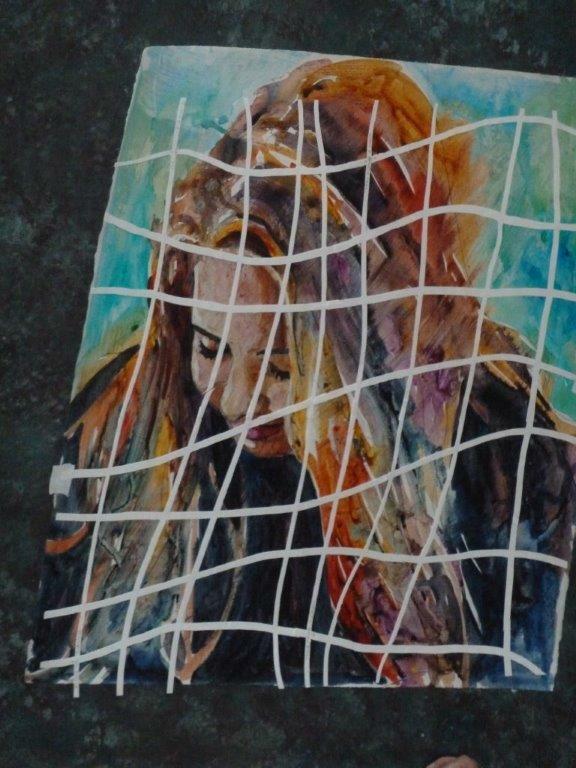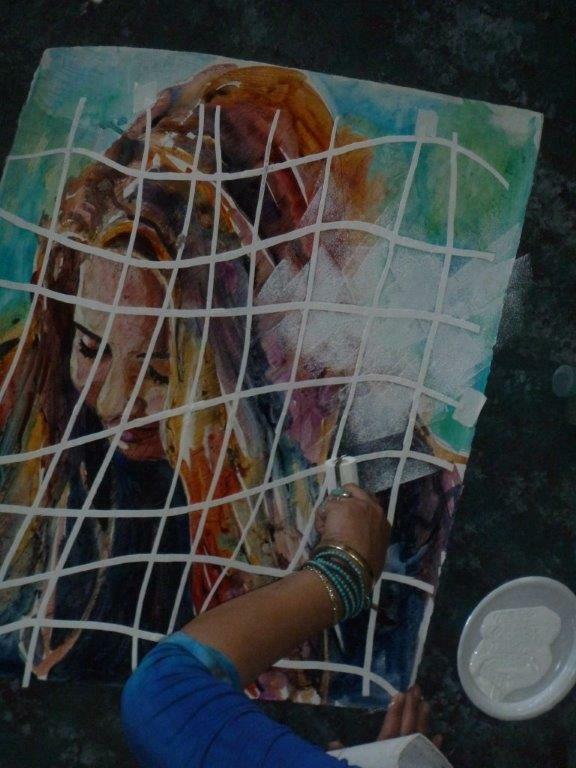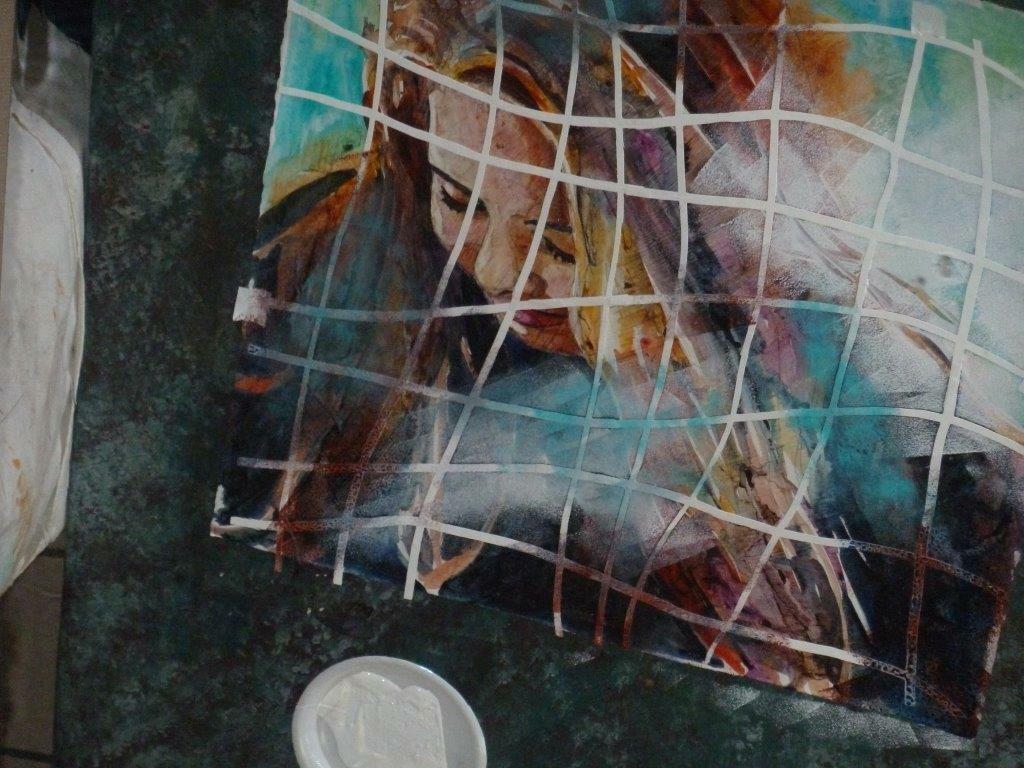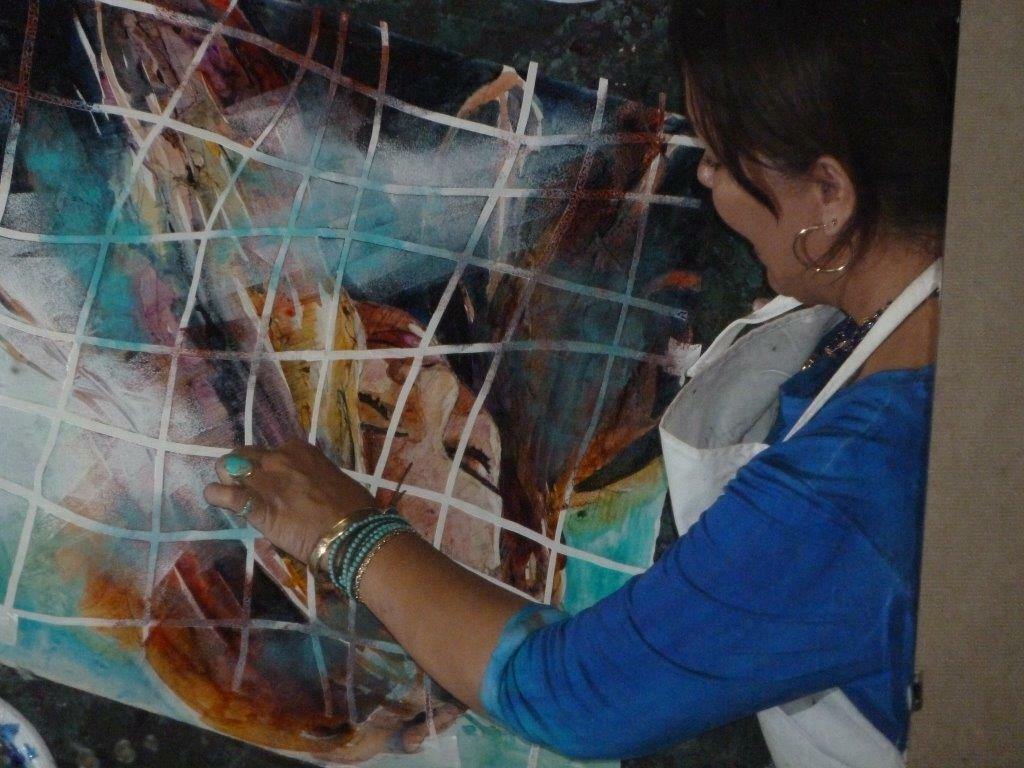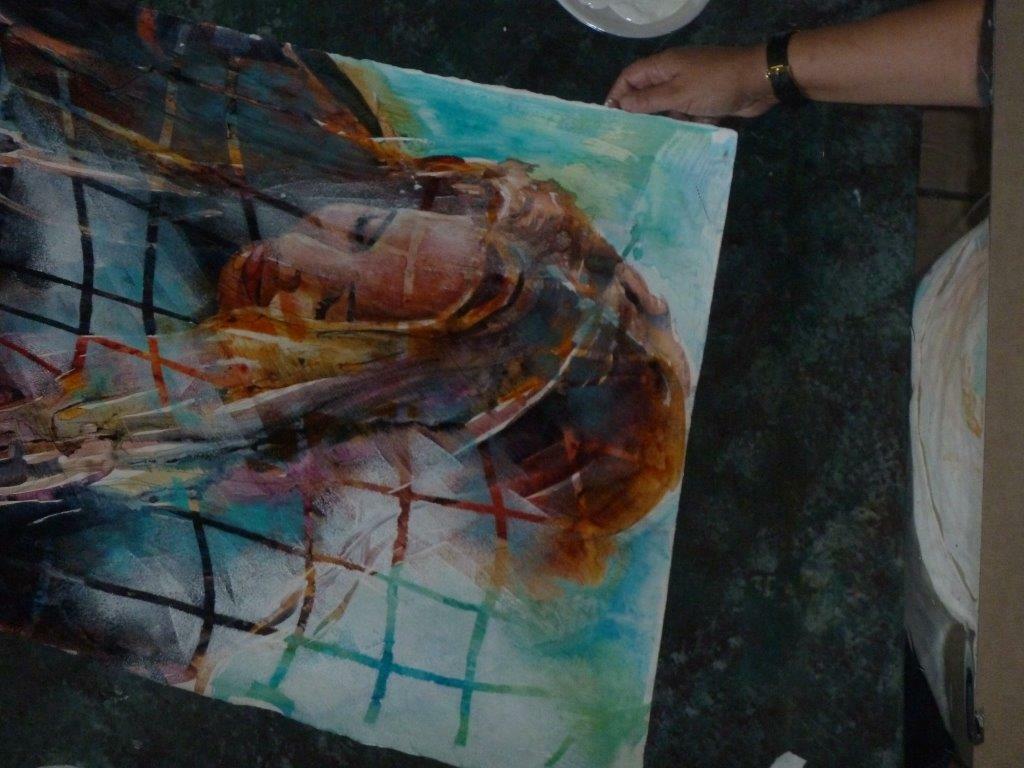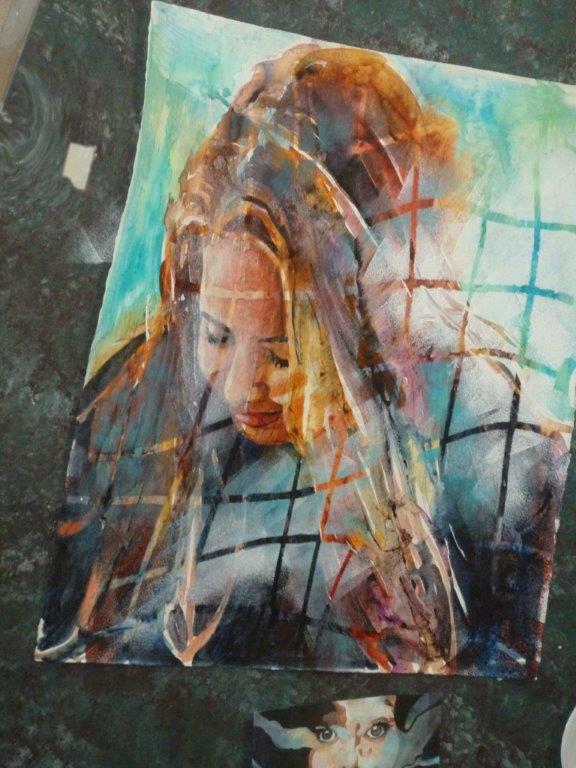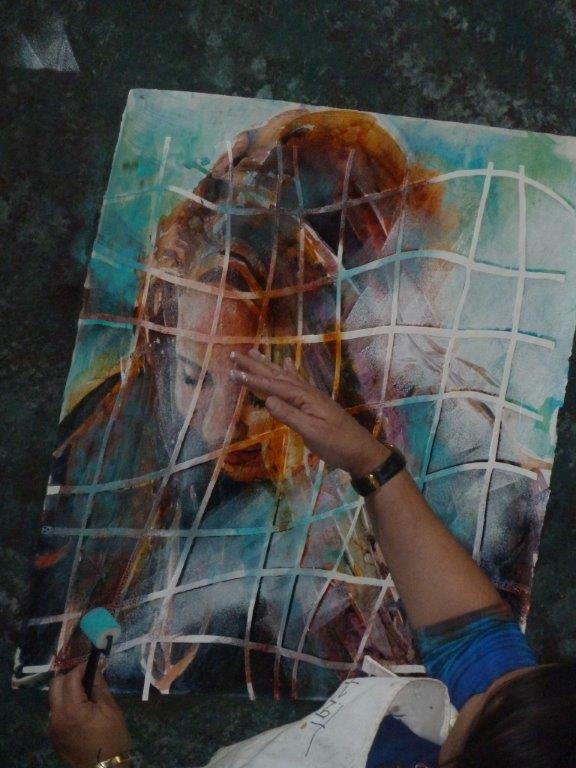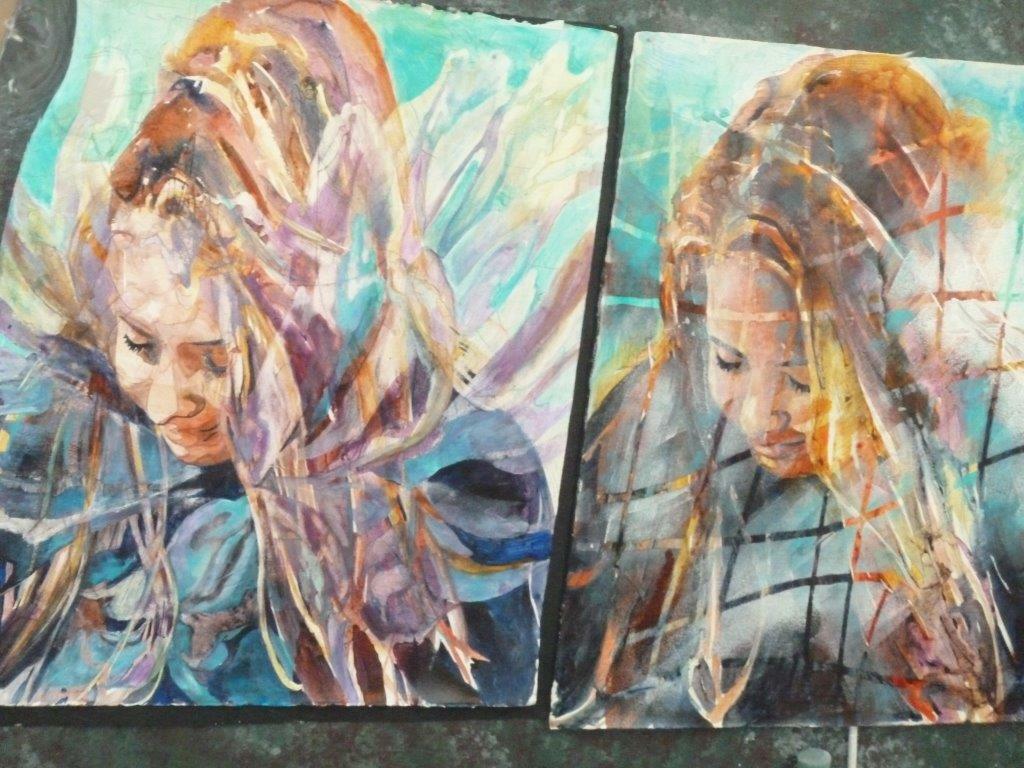OCTOBER 2015 PROGRAM - TRISH MCKINNEY
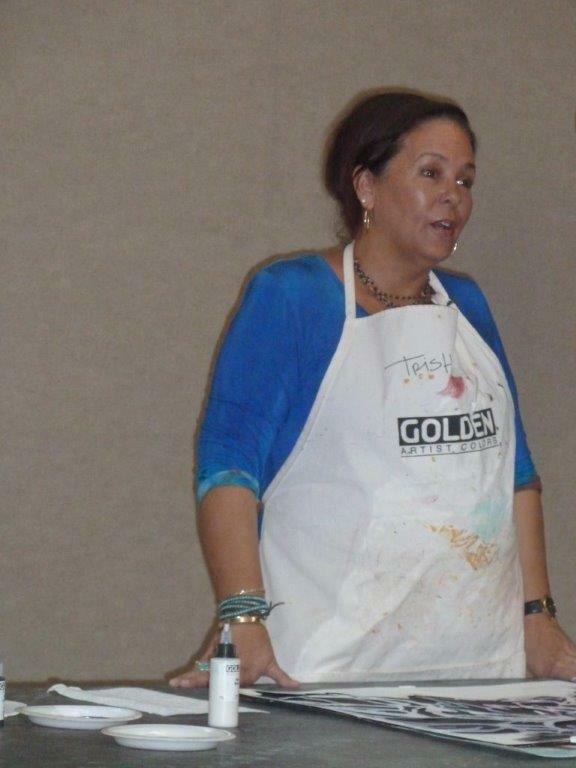
Our Presenter was Trish McKinney, who said she was “so glad to be here” – especially since she encountered quite a bit of traffic on the way. Trish has quite a resume, including being an award-winning artist in the Ohio Watercolor Society, teaching in Italy, and teaching an upcoming class in France. She will also be giving a presentation at this year’s Ohio Watercolor Society’s Show October 18th, in Middletown.
Trish loves to tell stories with her paintings, and she has lately become very interested in Chet Close’s concept of painting a work that looks very different from far away or near. This is why she called today’s presentation “Layers of Understanding”.
Trish first sees a “Moment” – for instance, her daughter’s hair blowing in the wind. She paints that, and then picks a stencil that “fits” the feeling, or emotion, or understanding that she wants to convey with her painting. She encouraged us to “Be Aware” of such moments.
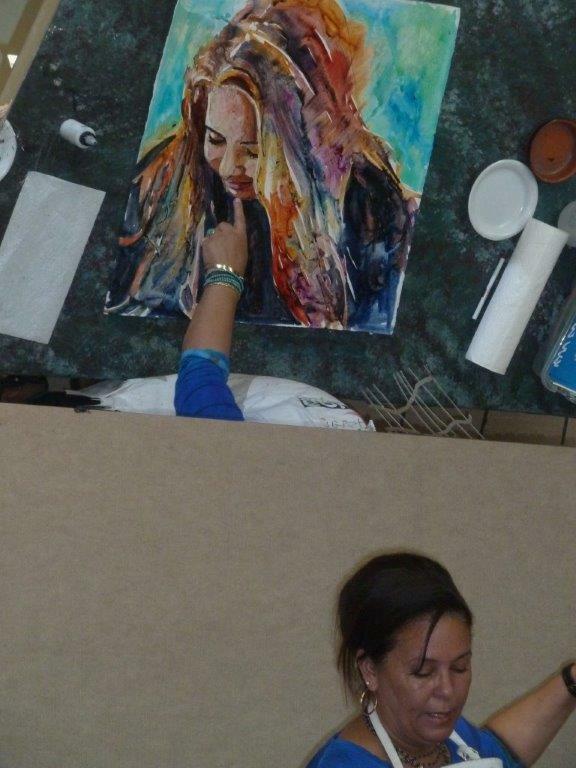
She used Arches 140 lb. hot press paper, with a matte medium for a watercolor under-painting of her daughter’s face and hair with lots of color. She is now a certified teacher with Golden products and likes the pigment quality of the Golden fluid acrylics paints. She used the matte medium so that she could “lift” paint later if she chose to. She likes having “options”. Trish has purchased stencils from stencilgirlproducts.com, and now she has created some of her own that they are selling for her. She explained how we too can make our own by drawing a pattern, finding a local place that does “signs”; have them die-cut stencils of your pattern. Or, you might find something you can use at Michael’s or Hobby Lobby – for both stencils, or other “tools” that are made for crafts, but can be used to be creative in your painting.
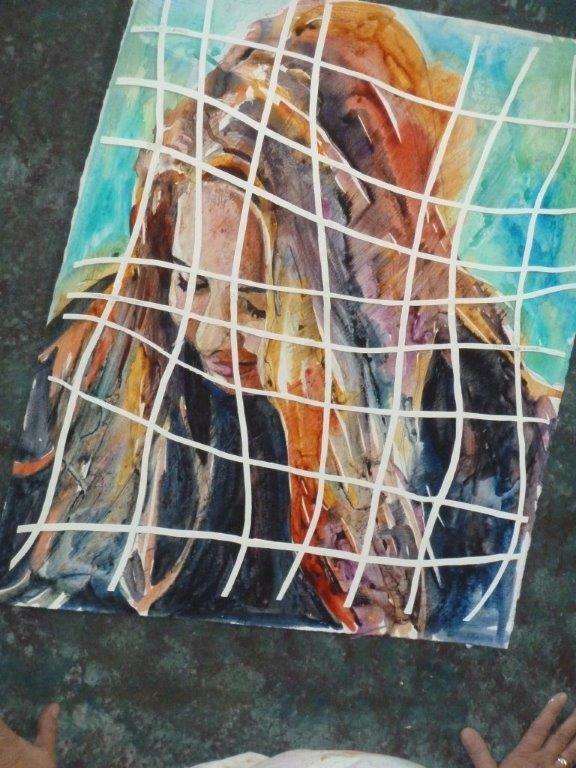
Trish first used stencil adhesive to keep it attached onto her painting. Then she used little sponge rollers to “paint” on gesso and two paint colors – one light, one dark – that had already been used in the original under-painting – to bring vitality, interest and excitement into the work. She brought light values into dark, and dark values into light, and made lost and found edges. As she worked, she stepped back and studied it, looking for any place that needed to be “balanced” with a light or dark color; or needed to be made “cool” or warm”; and to see if she needed to “lift”, with alcohol, any place (particularly on the face). This is why you need a good strong painting first; so you can “play”. All of this gives you “layers”. It takes a great deal of courage to paint over an already wonderful painting.
Trish emphasized how important it is to be part of a “community” of artists – a group that supports each other, paints with each other (even the Masters did this), and values all members, not taking anyone for granted.
Trish then led some Critiques of work brought in by members, and gave us pointers on how we could learn to critique our own paintings.
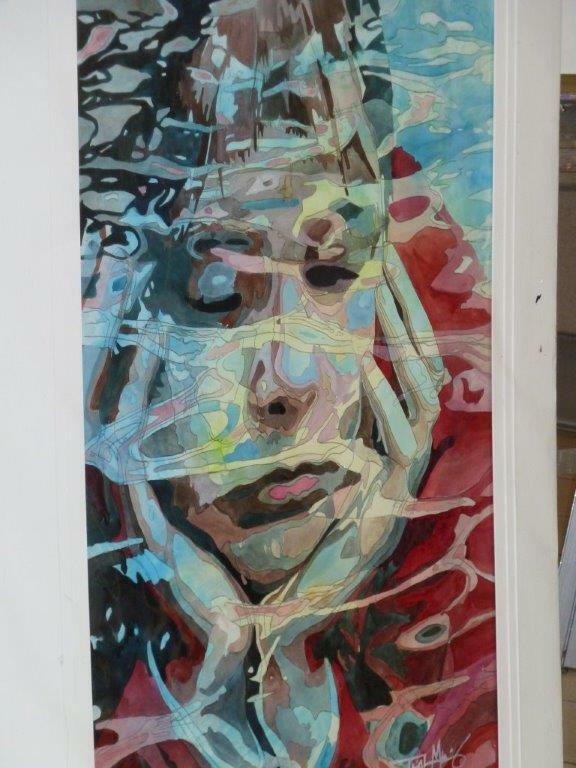
Submitted by Joyce Grothaus, Secretary, GCWS, October, 2015

